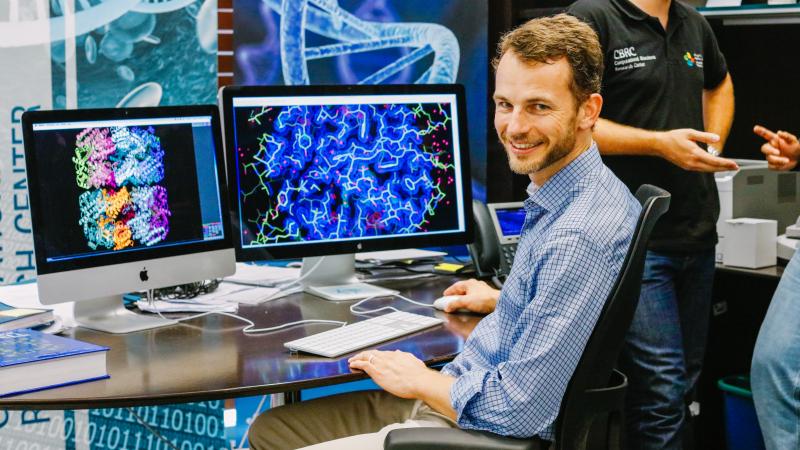© 2018 KAUST
The first specific inhibitor for an uncontrollable plant pest, the witchweed Striga hermonthica, has been discovered through collaboration between two groups at KAUST, led by plant biochemist Salim Al-Babili and structural biologist Stefan Arold.
Witchweed is a parasitic plant that attaches to the roots of cereal plants, stealing their water and nutrients. It affects more than 60 percent of farmland in sub-Saharan Africa, and is spreading across other areas, including Asia, Southeast Europe and Saudi Arabia. Commercial losses for sub-Saharan Africa alone exceed 7 billion US dollars.
Striga and related species have become one of the most serious threats to global food security,” says Imran Haider, from KAUST. The magnitude of its destruction led the Bill & Melinda Gates foundation to award substantial funding to Al-Babili who teamed up with other researchers in the biological sciences and those from the Computational Bioscience Research Center and Core Labs units.
“The breakthrough was fortuitous,” says postdoc Umar Hameed, whose team was studying the molecular structure of a cell membrane receptor protein involved in the germination of Striga seeds. This protein, ShHTL7, must bind to natural plant compounds called strigolactones during seed germination. While working to determine the structure of ShHTL7, the researchers used the molecule Triton X-100 to assist preparation of samples of the protein.
“We noticed that our ShHTL7 molecules always had Triton X-100 bound to them,” says Hameed. The next crucial discovery was that this binding of Triton X-100 molecules inhibits the germination of the Striga seeds, acting as an antagonist by preventing the natural strigolactones from binding.
"We soon realized that we had stumbled upon the first lead compound that could inhibit Strigaseed germination without also affecting the host plant infected with Striga,” says Haider. A lead compound demonstrates useful biological activity that can be refined by developing structurally similar, but more effective, compounds.
Read the full article

